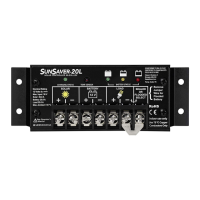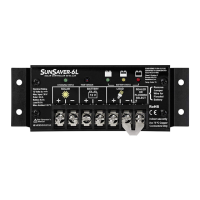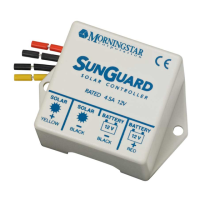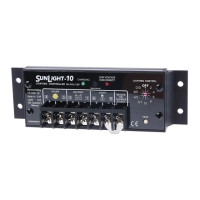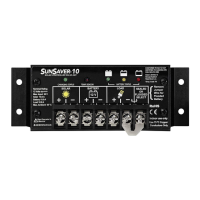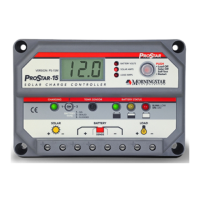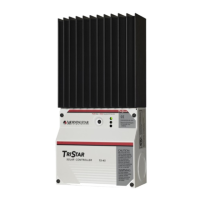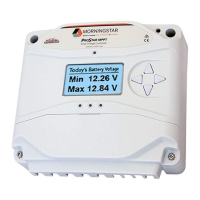
Do you have a question about the Morningstar SunSaver Series and is the answer not in the manual?
| Series | SunSaver |
|---|---|
| Controller Category | PWM |
| Nominal Voltage | 12V/24V |
| Nominal Battery Voltage | 12V/24V |
| Load Control | Yes |
| Operating Temperature | -40°C to +60°C |
| Model | SunSaver Series |
| Rated Current | 10A, 20A |
| Input Voltage | 12V, 24V |
| Protection Features | Short circuit, overcurrent, reverse polarity, high voltage |
| Maximum Output Current | 10A, 20A |
Summary of the test procedure developed for field conditions without external power sources.
Details on recommended tools and essential safety precautions for electrical circuit testing.
Checking for short circuits to ground between various terminals with no power applied.
Testing voltage measurements at battery and load terminals with only battery connected.
Evaluating voltage and AC signal characteristics when both PV and battery are connected.
Measuring load voltage with PV, battery, and a small load connected to check LVD FETs.
Final checks for correct operation, fuses, wiring, and electrical contact in the installed system.
